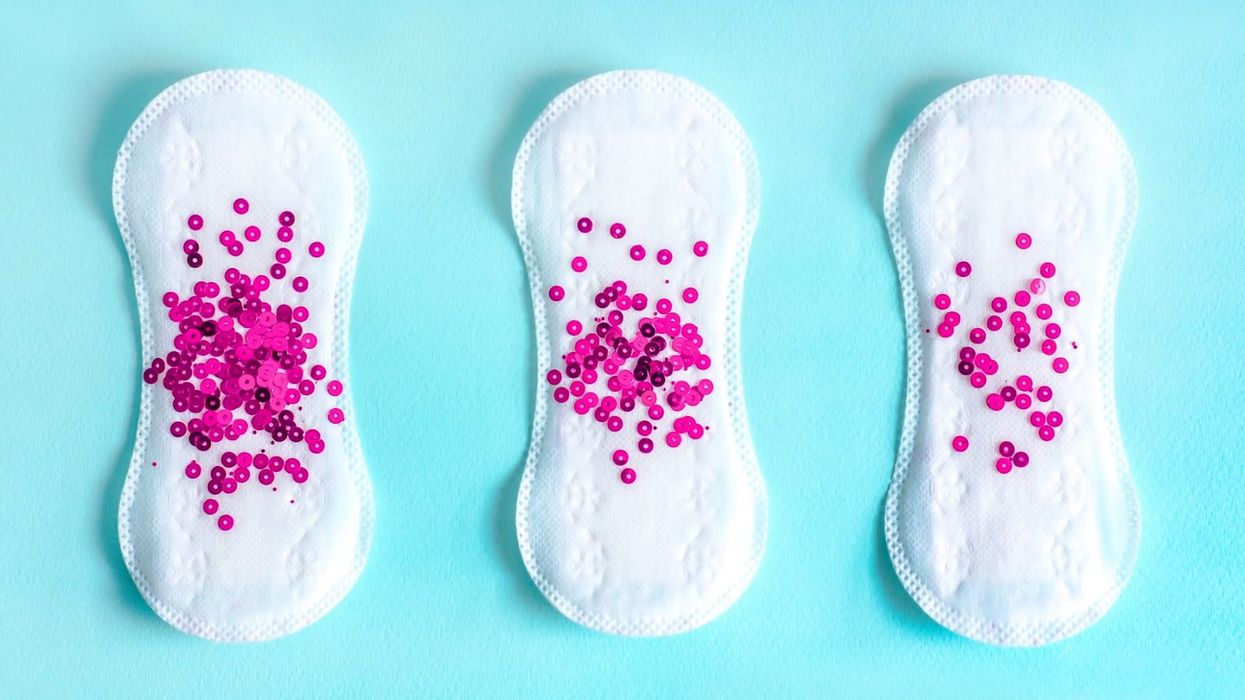Premenstrual Dysphoric Disorder, or PMDD, is the most severe form of PMS with severe psychological and physical symptoms.
Feelings of anxiety and depression intensify and in some more severe cases, women can feel suicidal. An alarming study from the International Association for Premenstrual Disorders (IAPMD), revealed that 34 per cent of those diagnosed with PMDD have attempted to take their lives.
The behavioural changes can impact work and relationships "to a significant degree," and the condition can often get downplayed, misdiagnosed or left untreated – mostly because it takes 12 years on average to be diagnosed.
With the help of professionals and social media, PMDD awareness is becoming more prominent. On TikTok alone, explainers have racked up a collective total of almost 300 million views and are helping more and more women identify with symptoms.
Indy100 spoke with Dr Claire Phipps, GP and advanced menopause specialist at London Gynaecology, about how PMDD occurs and how you can go forward if there are suspected symptoms.
What is PMDD?
"The underlying basis for premenstrual syndrome/PMDD and the mood-related changes that are associated are to do with fluctuating levels of hormones," Dr Phipps explained. "Some women are thought to be especially sensitive to these changing levels, particularly in the luteal phase of the cycle (the two weeks prior to a period).
"These changes happen due to ovulation and the hormone changes that this brings about. With ovulation, the ovaries produce increasing levels of progesterone and oestrogen levels go down. This is thought to affect the serotonergic pathway in the brain leading to mood-related symptoms."
Most women will experience some symptoms during the premenstrual two-week phase. Around 20 to 30 per cent will experience significant PMS symptoms.
However, PMDD is estimated to affect just five to eight per cent of menstruating women.
What are the symptoms?
- Mood swings with feelings of extreme anxiety, sadness and increased irritability
- Depression with feelings of hopelessness
- Aggressive angry feelings
- Decreased performance in work and sports
- Lack of concentration and inability to perform to usual standards
- Poor quality of sleep
- Physical symptoms include abdominal cramps, headaches, breast tenderness and hot flushes

Why is it so difficult to diagnose?
"Many women notice these symptoms but may take some time, sometimes years, before making the association," Dr Phipps said. "It encompasses a spectrum of symptoms, which can make a diagnosis and the connection with periods difficult."
If someone is suffering from a mood disorder such as major depression or bipolar, it can worsen during a period and "can mimic PMDD and make the diagnosis tricky."
Dr Phipps continued: "PMDD was included in the DSM (The Diagnostic and Statistical Manual of Mental Disorders) in 2013 and research published in 2017 found a genetic basis for the unusual sensitivity of people suffering from PMDD to oestrogen and progesterone. As you can see this is all quite recent and the lack of consensus and knowledge leads to problems with misdiagnosis."
How can someone get a formal diagnosis if concerned?
If anyone is worried about their symptoms, it is imperative to speak to a health care professional.
"Ask your GP surgery if there is someone who specialises in this area," Dr Phipps advised, adding that it is "crucial" to log the symptoms, ideally for two to three cycles.
"This can seem frustrating, especially when you are feeling bad, but it will help your diagnosis. Symptom questionnaires can be found at pms.org.uk and the NAPS site (National Association for Premenstrual Syndromes) is a valuable resource," she added.
What are the treatment options?
Doctors may advise the contraceptive pill to even out hormone levels and block ovulation, Dr Phipps told Indy100, adding: "This is often useful in reducing PMDD symptoms. It is helpful to be aware of when the symptoms may start and to have a supportive family and colleagues."
She went on to share the importance of reducing stress through lifestyle changes at work and home.
"Mindfulness, yoga and meditation are also known to provide comfort. Avoiding caffeine, sugar, smoking and alcohol can also help," she suggested. "Getting eight hours of sleep with regular exercise and a balanced diet is very important. Managing physical symptoms through painkillers can also help the severity of psychological symptoms. Taking B-6 Pyridoxine vitamin and Evening Primrose Oil tablets (both available over the counter) during this two-week window can be helpful."
Dr Phipps said it is important to visit a GP or gynaecologist if the symptoms are affecting your well-being, quality of life, work or relationship.
"Symptoms start with the onset of ovulation and improve with menstruation. It is helpful to keep a menstrual diary of symptoms which will help your healthcare professional tailor treatment to suit your needs and assess the severity and cyclical nature of your symptoms and is an important part of the diagnosis," she continued.
Therapy can also be helpful for many, such as CBT (Cognitive Behavioural Therapy).
In terms of medication for severe mood-related symptoms, "a doctor may suggest SSRI (selective serotonin reuptake inhibitor) medication which also works as an anti-depressant."
Seeking appropriate referral and treatment is important. Your GP will be able to arrange this.
For more useful PMDD information, you can head over to The International Association of Premenstrual Disorders website.
How to join the indy100's free WhatsApp channel
Sign up for our free Indy100 weekly newsletter
Have your say in our news democracy. Click the upvote icon at the top of the page to help raise this article through the indy100 rankings.













